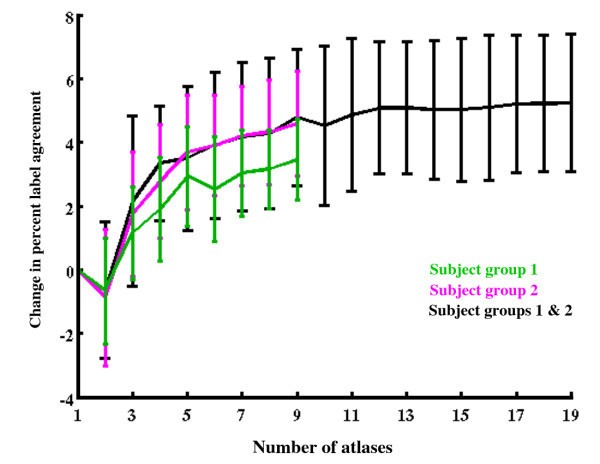Automated Anatomical Labeling (AAL) (or Anatomical Automatic Labeling) is a software package and digital atlas of the human brain. It is typically used in functional neuroimaging -based research to obtain neuroanatomical labels for the locations in 3-dimensional space where the measurements of some aspect of brain function were captured. Semi-automatic labeling systems are an efficient solution for mid to large companies that are transitioning to full automation. Conveyors & Material Handling. LabelPack Automation offers a full range of conveyors to suite a variety of applications. Whether your company needs a high capacity long run project or a simple short-run print job - we. Automatic labeling in Office apps for Windows is supported by the Azure Information Protection unified labeling client. For built-in labeling in Office apps, this capability is in different stages of availability for different apps. The auto-labeling settings for Office apps are available when you create or edit a sensitivity label. Labeling Machines Providing you the best range of Labeling Machines such as Automatic Round Bottle Labeling Machines, Automatic Flat Bottle Labeling Machines (Two Head Labeling), Automatic Top Labeling Machines, Hologram Labeling Machine for Continuous Roll, Automatic Sticker & Hologram Labeling Machines for Sheets and Automatic Tube Labeling Machines with effective & timely delivery. Anatomical Automatic Labeling (AAL) is a computer program package and a digital human brain atlas. It is particularly used in research-based human functional neuroimaging, where it is used to obtain a neuroanatomical label to a given coordinate in the human brain. How to Quickly Check Pipettes?


Coremelt complete v2 mac keygen file opener. We consider this document to be an instructional aid that does not establish new guidance, but instead compiles existing interpretations of statutory and regulatory provisions and reiterates existing Agency policies.
We are interested in optimizing the usefulness of the Label Review Manual (LRM) as a tool for understanding the pesticide labeling process. The LRM is also useful in understanding approaches for how labels should generally be drafted. As always, we will consider each label on its own merits and will consider deviations from our policy in labeling under the appropriate provisions of FIFRA and its implementing regulations.
Submit errors or suggestions for the LRM on the Pesticide Labeling Questions and Answers page, which is a component of the Pesticide Labeling Consistency Web page. Microsoft words for mac download free.
Label Review Manual Table of Contents



Coremelt complete v2 mac keygen file opener. We consider this document to be an instructional aid that does not establish new guidance, but instead compiles existing interpretations of statutory and regulatory provisions and reiterates existing Agency policies.
We are interested in optimizing the usefulness of the Label Review Manual (LRM) as a tool for understanding the pesticide labeling process. The LRM is also useful in understanding approaches for how labels should generally be drafted. As always, we will consider each label on its own merits and will consider deviations from our policy in labeling under the appropriate provisions of FIFRA and its implementing regulations.
Submit errors or suggestions for the LRM on the Pesticide Labeling Questions and Answers page, which is a component of the Pesticide Labeling Consistency Web page. Microsoft words for mac download free.
Label Review Manual Table of Contents
Anatomical Automatic Labeling Manual Pdf
You may need a PDF reader to view some of the files on this page. See EPA's About PDF page to learn more.Anatomical Terminology Labeling
- Label Review Manual - Complete Manual (PDF)(282 pp, 9 MB, March 2018)
- Chapter 1: Purpose of the Manual (PDF)(5 pp, 475 K, December 2016)
- Chapter 2: What is a Pesticide? (PDF)(11 pp, 753 K, April 2014)
- Chapter 3: General Labeling Requirements (PDF)(20 pp, 1 MB, March 2018)
- Chapter 4: Types of Label Reviews (PDF)(12 pp, 827 K, December 2011)
- Chapter 5: Ingredient Statement (PDF)(15 pp, 768 K, May 2012)
- Chapter 6: Use Classification (PDF)(5 pp, 740 K, January 2012)
- Chapter 7: Precautionary Statements (PDF)(20 pp, 1 MB, March 2018)
- Chapter 8: Environmental Hazards (PDF)(15 pp, 865 K, September 2012)
- Chapter 9: Physical or Chemical Hazards (PDF)(7 pp, 774 K, September 2012)
- Chapter 10: Worker Protection Labeling (PDF)(28 pp, 922 K, February 2016)
- Chapter 11: Directions for Use (PDF)(32 pp, 986 K, December 2014)
- Chapter 12: Labeling Claims (PDF)(13 pp, 678 K, November 2013)
- Chapter 13 Storage and Disposal (PDF)(56 pp, 2 MB, July 2013)
- Chapter 14: Identification Numbers (PDF)(6 pp, 720 K, November 2012)
- Chapter 15: Company Name and Address (PDF)(5 pp, 1 MB, August 2017)
- Chapter 16: Graphics and Symbols (PDF)(7 pp, 1 MB, August 2017)
- Chapter 17: Net Contents/Net Weight (PDF)(6 pp, 1 MB, February 2018)
- Chapter 18: Unique Product Labeling (PDF)(13 pp, 525 K, September 2013)
